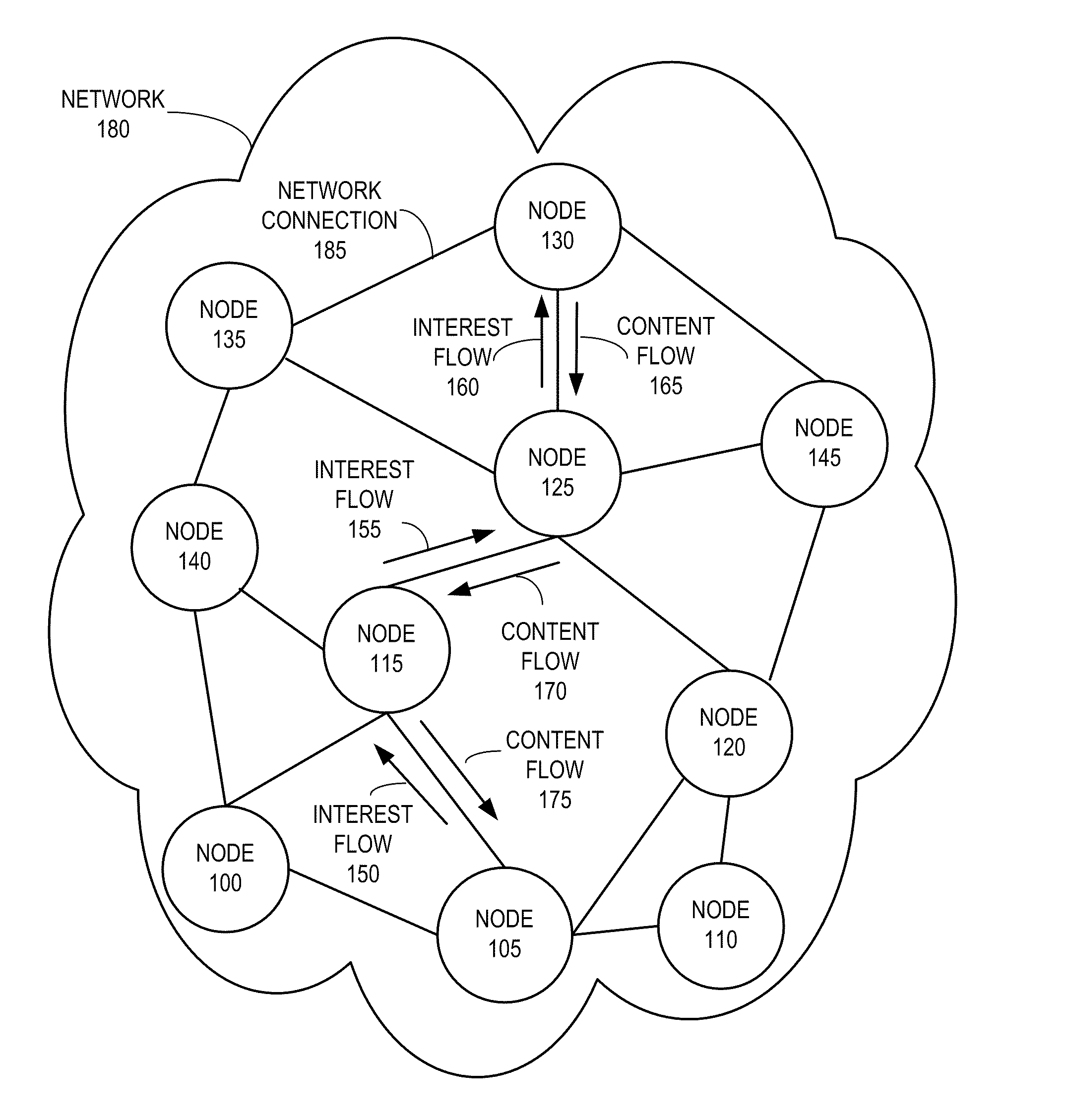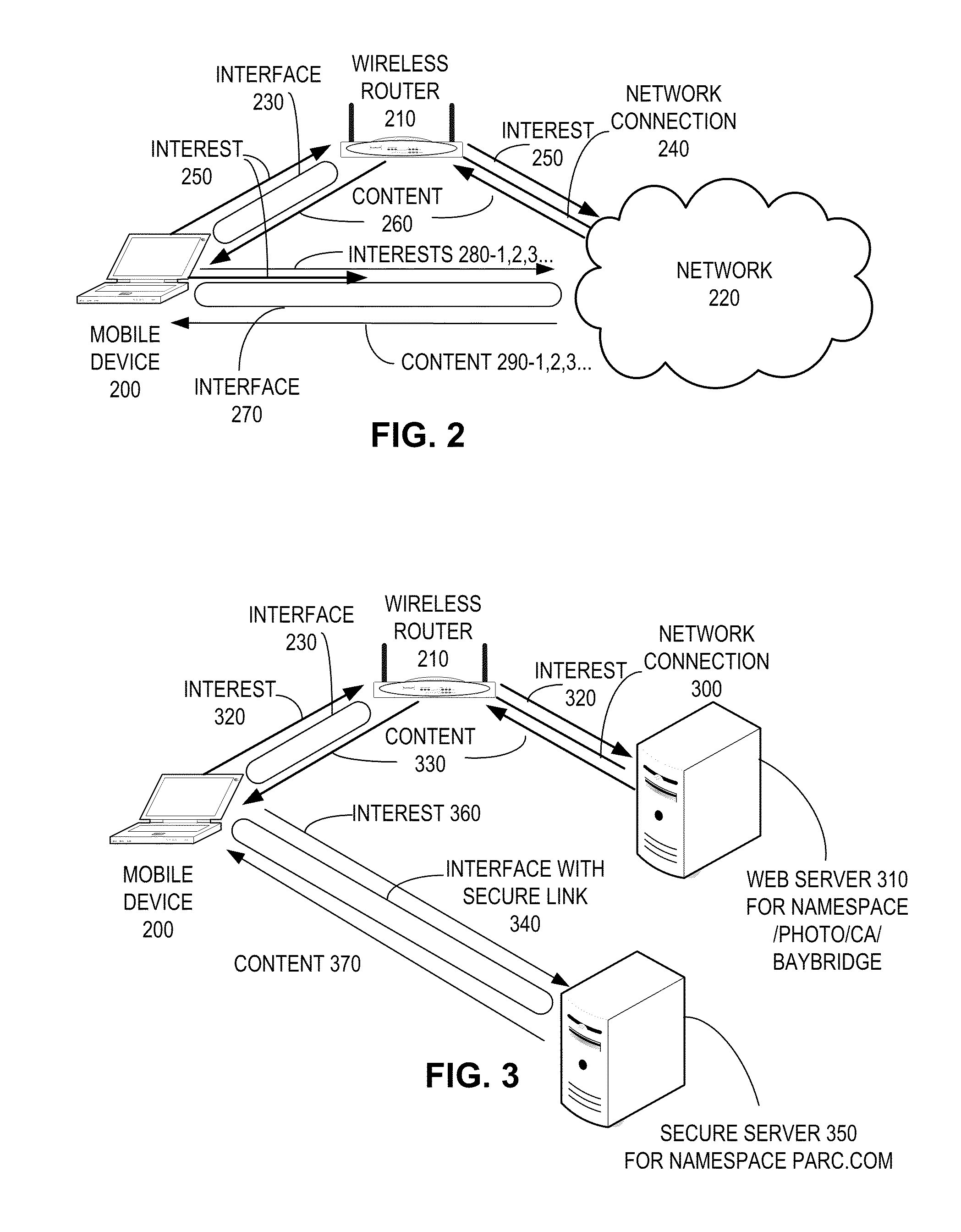Adaptive multi-interface use for content networking
a content network and multi-interface technology, applied in the field of facilitating communication over a data network, can solve the problems of inability to adapt to the ever-changing network demands, the restriction addressing scheme is becoming progressively inadequate, and the arpanet designers never expected it to evolve into today's ubiquitous internet,
- Summary
- Abstract
- Description
- Claims
- Application Information
AI Technical Summary
Benefits of technology
Problems solved by technology
Method used
Image
Examples
Embodiment Construction
Overview
[0031]Embodiments of the present invention integrate different information flows to make decisions about how to configure forwarding of interests in particular content collections given multiple simultaneous connectivity options. Specifically, embodiments of the present invention facilitate configuring a forwarding engine that receives interests in content rather than addresses, where the configuration can be based on knowledge of the content, forwarding policies, and contextual information about the network. Embodiments of the present invention also facilitate finer-grained decision-making among multiple forwarding options.
[0032]Content centric networks—where routing is based on interests rather than addresses—bring a new approach to content transport. Instead of having network traffic viewed at the application level as end-to-end conversations over which content travels, content is requested or returned based in part on the name given to it, and the network is responsible ...
PUM
 Login to View More
Login to View More Abstract
Description
Claims
Application Information
 Login to View More
Login to View More - R&D
- Intellectual Property
- Life Sciences
- Materials
- Tech Scout
- Unparalleled Data Quality
- Higher Quality Content
- 60% Fewer Hallucinations
Browse by: Latest US Patents, China's latest patents, Technical Efficacy Thesaurus, Application Domain, Technology Topic, Popular Technical Reports.
© 2025 PatSnap. All rights reserved.Legal|Privacy policy|Modern Slavery Act Transparency Statement|Sitemap|About US| Contact US: help@patsnap.com



